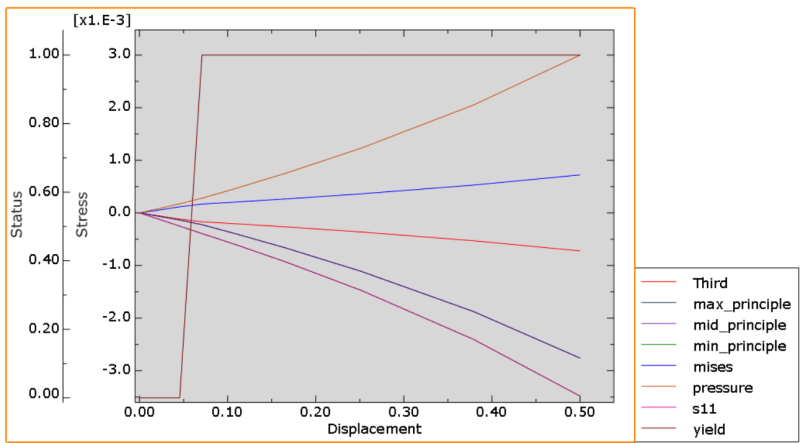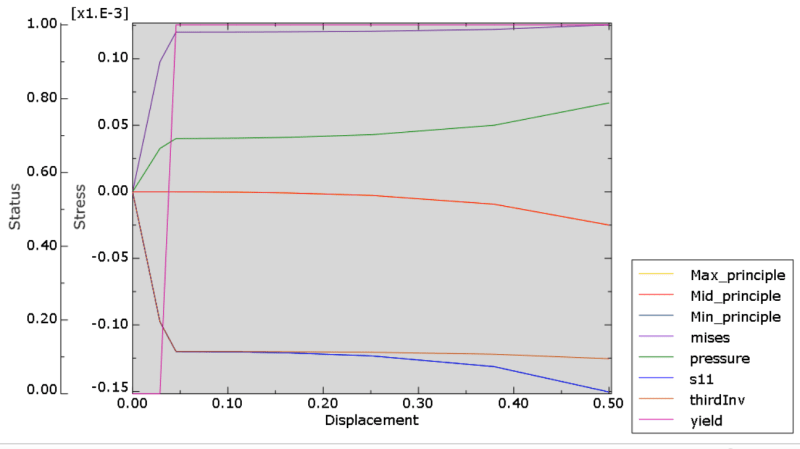Hello,
I'm simulating a Representative Volume Element (RVE) to estimate it's homogenised properties under pure compression in X direction.
After some attempts I decided to try just an isotropic material model with one-element simulation, but with the similar boundary conditions, which emulate Periodic Boundary Conditions (PBC) in my loading case: symmetry on X on one side, symmetry on Y on both sides and symmetry on Z on both sides as well. One side is subjected to uniform displacement in X direction. I tested the Extended Drucker-Prager model with perfect plasticity after 120 MPa
What I found out in results is that after yield had begun stresses (mises, pressure, principles and S11) kept on rising up to the end of simulation in the same "straight" manner they had benn rising before yield. It doesn't even seem to look like plastic behaviour.
If I change my boundary conditions to simple support on one side perpendicular to X and retain the displacement on the opposite side, the result picture of stresses begins to look more "plastic-like".
Can anyone explain me the performance of material model in first case (PBC)? Thanks in advance
I'm attaching the plots of the both cases. Units for stress are TerraPascals (i.e. my yield strength is 120e-6TPa), horizontal axis is the applied strain in X direction (recalculated from displacement and X size of the element: strain=displacement/x-size)
Thanks in advance
PBC variant :

Simple supported variant:

I'm simulating a Representative Volume Element (RVE) to estimate it's homogenised properties under pure compression in X direction.
After some attempts I decided to try just an isotropic material model with one-element simulation, but with the similar boundary conditions, which emulate Periodic Boundary Conditions (PBC) in my loading case: symmetry on X on one side, symmetry on Y on both sides and symmetry on Z on both sides as well. One side is subjected to uniform displacement in X direction. I tested the Extended Drucker-Prager model with perfect plasticity after 120 MPa
What I found out in results is that after yield had begun stresses (mises, pressure, principles and S11) kept on rising up to the end of simulation in the same "straight" manner they had benn rising before yield. It doesn't even seem to look like plastic behaviour.
If I change my boundary conditions to simple support on one side perpendicular to X and retain the displacement on the opposite side, the result picture of stresses begins to look more "plastic-like".
Can anyone explain me the performance of material model in first case (PBC)? Thanks in advance
I'm attaching the plots of the both cases. Units for stress are TerraPascals (i.e. my yield strength is 120e-6TPa), horizontal axis is the applied strain in X direction (recalculated from displacement and X size of the element: strain=displacement/x-size)
Thanks in advance
PBC variant :

Simple supported variant:

